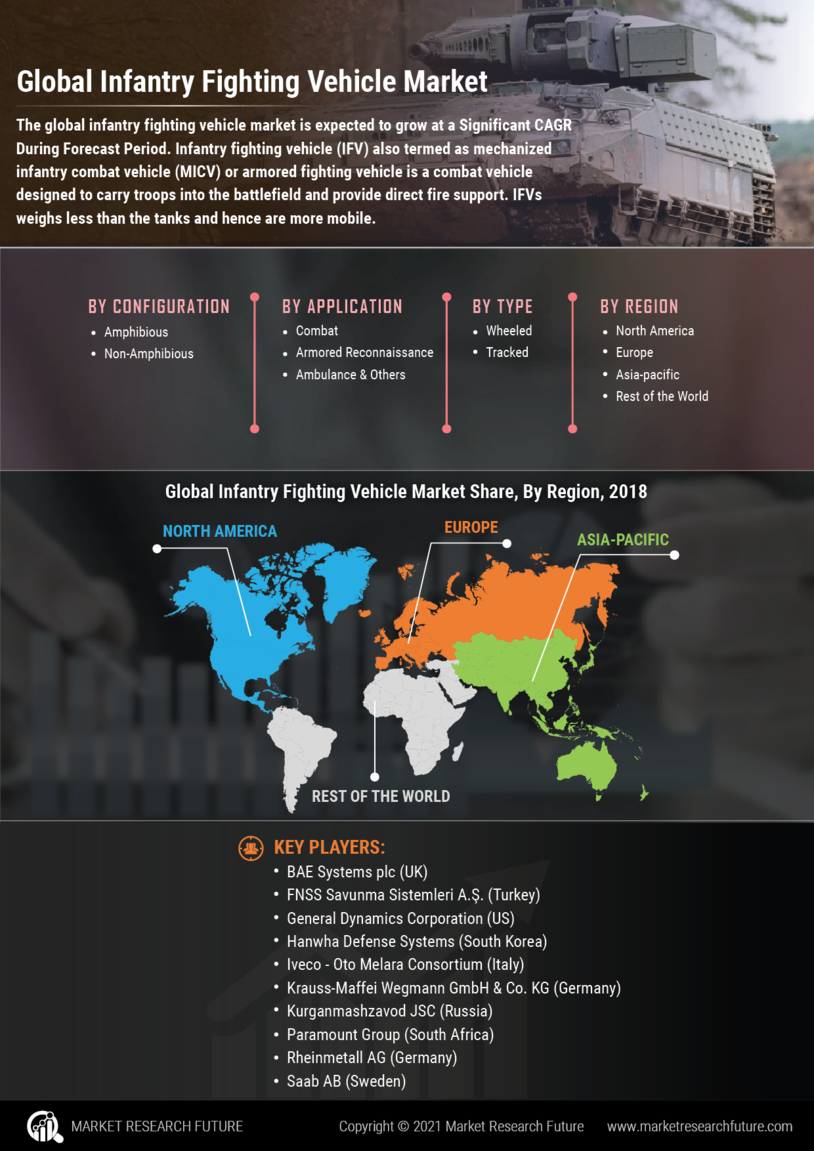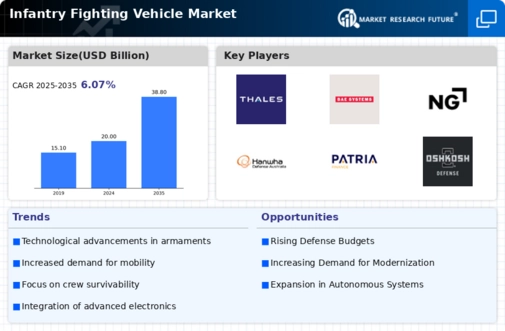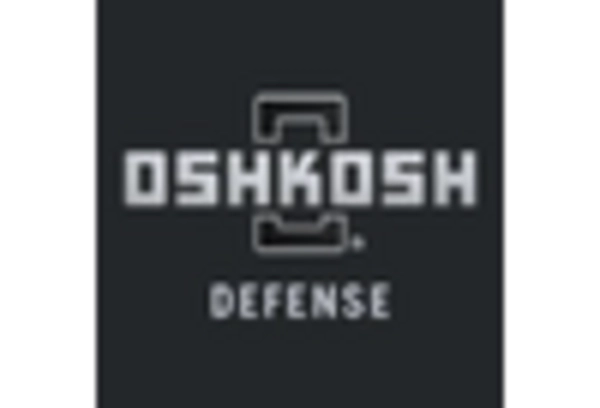North America : Defense Innovation and Investment
North America remains the largest market for Infantry Fighting Vehicles (IFVs), accounting for approximately 40% of the global market share. The region's growth is driven by increasing defense budgets, modernization programs, and geopolitical tensions. Regulatory support from the U.S. Department of Defense and ongoing military engagements further catalyze demand for advanced IFVs. The United States is the leading country in this sector, with key players like General Dynamics and Oshkosh Defense dominating the landscape. Canada also contributes to the market, focusing on modernization and procurement of IFVs. The competitive environment is characterized by significant investments in R&D and partnerships between government and private sectors, ensuring technological advancements in military capabilities.
Europe : Strategic Defense Collaborations
Europe is the second-largest market for Infantry Fighting Vehicles, holding around 30% of the global share. The region's growth is propelled by collaborative defense initiatives, increased military spending, and the need for modernization of aging fleets. Regulatory frameworks from the European Union and NATO emphasize interoperability and joint operations, further driving demand for advanced IFVs. Leading countries include Germany, France, and the UK, with major players like Rheinmetall, BAE Systems, and Nexter Systems. The competitive landscape is marked by strategic partnerships and joint ventures aimed at enhancing technological capabilities. The focus on indigenous production and innovation is evident, as countries seek to reduce dependency on external suppliers and bolster their defense industries.
Asia-Pacific : Rapid Military Modernization
Asia-Pacific is witnessing significant growth in the Infantry Fighting Vehicle Market, accounting for approximately 20% of the global share. The region's demand is driven by rapid military modernization, territorial disputes, and increasing defense budgets. Countries like India and South Korea are investing heavily in indigenous production and technological advancements, supported by government initiatives aimed at enhancing national security. Key players in this region include Hanwha Defense and Kurganmashzavod, with a focus on developing advanced IFVs tailored to regional needs. The competitive landscape is characterized by a mix of domestic and international players, fostering innovation and collaboration. As nations prioritize defense capabilities, the market is expected to expand further, driven by strategic partnerships and technological advancements.
Middle East and Africa : Emerging Defense Markets
The Middle East and Africa region is emerging as a significant market for Infantry Fighting Vehicles, holding about 10% of the global share. Growth is driven by regional conflicts, increasing defense budgets, and a focus on enhancing military capabilities. Countries like Saudi Arabia and the UAE are investing in modernizing their armed forces, supported by government initiatives aimed at boosting local defense industries. The competitive landscape features a mix of local and international players, with companies like Elbit Systems and Thales Group leading the charge. The region's focus on procurement and joint ventures is evident, as nations seek to enhance their defense capabilities through strategic partnerships. As security concerns rise, the demand for advanced IFVs is expected to grow, reflecting the region's commitment to military modernization.


















Leave a Comment